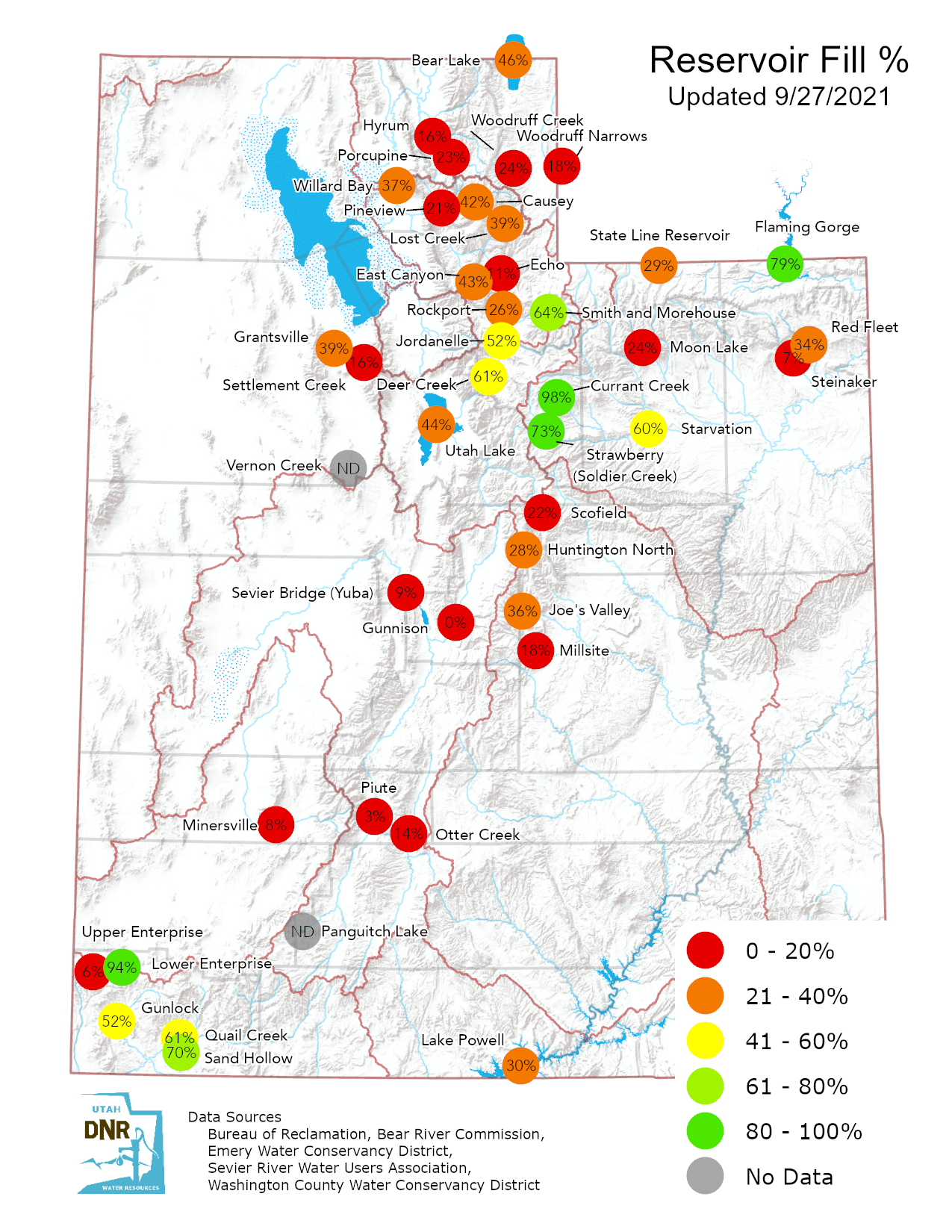ST. GEORGE — Friday marks the beginning of a new water year and brings with it a slight sense of relief in relation to what has been one of the worst drought years on state record. While Utah still struggles with the ongoing drought, monsoonal rains have brought some hope for refilled reservoirs in the future.

Each water year starts Oct. 1 and runs through Sept. 30 of the following year. Brian Steed, executive director of the Utah Department of Natural Resources, said in a press release that Thursday closed out a “dismal” water year that set records no one wanted to see.
“The 2021 water year set the wrong records, with record-low streamflows and reservoir levels, and record-dry soils,” Steed said.
“The return of monsoon rains, which were absent the last two years, helped reduce demand on our struggling reservoirs but also caused damaging flooding in some areas. Since about 95% of our water supply comes from snowpack, we need to continue to be vigilant in reducing our water use and planning for future conditions if we have another poor or even average snowpack.”
Because the ground was so dry last spring, snowpack runoff that would have otherwise made its way to Utah’s reservoirs and helped refill them was sucked into the earth. However, the monsoonal rainstorms have helped increase moisture in the soil to the point the ground likely won’t suck up the majority of any runoff from snowpack Utah may get this winter.

According to the DNR, average soil moisture this time last year was 29.9%. This week the average is at 36%, which slightly below the 37.8% average.
Utah Gov. Spencer Cox during his monthly press conference Thursday that these numbers don’t impact Utah’s reservoirs in the immediate but will next spring.
“This will definitely help us with spring runoff.”
Across the state, reservoir capacity has dropped to 47% as opposed to 67% this time last year.
Locally, according to the Washington County Water Conservancy District, Gunlock Reservoir is at 53%, Kolob is at 51%, Sand Hollow stands at 70% and Quail Creek is at 61%.
Additionally, the Upper Enterprise Reservoir is at 6% capacity while the Lower Enterprise Reservoir is at 94%, according to the DNR.
“The good news is it’s not the lowest its ever been,” Cox said. “Its close, but its not the lowest.”
The governor once again credited the monsoon rains for this, as well as Utahns in general paying attention to drought conditions and using less water. People cutting their watering has helped the state save billions of gallons and also helped make sure the state will have drinking water into next year should severe drought conditions linger into 2022.
Even if Utah receives an above average snowpack this winter, Cox said it will take years to replenish the water lost during the prior water year.

Moving into the future, the governor said people will likely see water conservation-related bills introduced during next year’s legislative session as the state’s elected leaders work to find and implement the best water solutions and practices possible.
The state government is already working with private land owners, water conservancy districts and the federal government on future water storage projects, the governor said.
Ways to help farmers and ranchers use their own water more efficiently – like replacing old water systems with new ones – are also being pursued. An example of looking to new watering and farming methods that can produce high yields while using less water is currently being explored in Iron County at the Southern Utah University Farm. The governor visited this project at the beginning of September.
Overall, the state will continue to plan for ways to support a growing population with less water.
“We still have a long way to go,” Cox said, “but I am telling you, we’re all breathing just a little easier now than we did two months ago.”
Copyright St. George News, SaintGeorgeUtah.com LLC, 2021, all rights reserved.